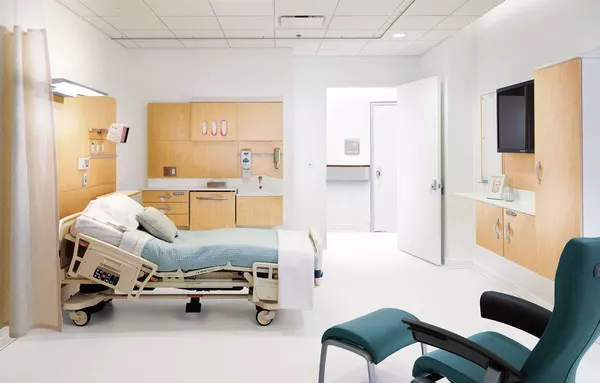The prostate, a walnut-sized gland located below the bladder in men, plays a crucial role in reproductive health. However, as men age, the prostate can undergo changes that may lead to enlargement, a condition known as benign prostatic hyperplasia (BPH). This article explores the intricacies of an enlarged prostate and delves into the question that concerns many men: Can an enlarged prostate go back to normal?
Understanding Enlarged Prostate
Benign prostatic hyperplasia is a common condition among aging men, characterized by the non-cancerous enlargement of the prostate gland. While the exact cause of BPH is not fully understood, hormonal changes and genetic factors are believed to contribute to its development. As the prostate enlarges, it can exert pressure on the urethra, leading to various urinary symptoms such as frequent urination, urgency, weak urine stream, and incomplete bladder emptying.
Diagnosis and Assessment
When facing symptoms suggestive of an enlarged prostate, seeking medical advice is paramount. Healthcare professionals employ a range of diagnostic tools to assess the severity of the condition and rule out other potential causes. Common assessments include a digital rectal examination (DRE), prostate-specific antigen (PSA) blood test, and imaging studies such as ultrasound or magnetic resonance imaging (MRI). Through these evaluations, healthcare providers can determine the size of the prostate and the extent of its impact on urinary function.
Medical Management of Enlarged Prostate
Medications
The first line of treatment for an enlarged prostate often involves medications. Alpha-blockers and 5-alpha reductase inhibitors are commonly prescribed to alleviate symptoms and reduce the size of the prostate. Alpha-blockers relax the muscles around the prostate and bladder neck, improving urine flow, while 5-alpha reductase inhibitors target hormonal changes that contribute to prostate enlargement.
Minimally Invasive Procedures
For cases where medications prove insufficient, minimally invasive procedures may be considered. Transurethral resection of the prostate (TURP), laser therapy, and transurethral microwave therapy (TUMT) are examples of interventions aimed at reducing prostate size and improving urinary symptoms. These procedures are generally well-tolerated and have a lower risk of complications compared to traditional surgical approaches.
Surgical Intervention
In severe cases of BPH or when other treatments are ineffective, surgical intervention may be recommended. Open prostatectomy and transurethral resection of the prostate (TURP) are traditional surgical procedures that involve removing part or all of the enlarged prostate. While effective, these surgeries are associated with longer recovery times and a higher risk of side effects.
See Also:10 Natural Prostate Shrinking Supplements
Can an Enlarged Prostate Return to Normal?
Addressing the central question of whether an enlarged prostate can return to normal requires a nuanced understanding of the condition. While complete reversal to the original size is unlikely, effective management strategies can significantly reduce the size of the prostate and alleviate associated symptoms.
Lifestyle Modifications
Adopting a healthy lifestyle is a crucial aspect of managing an enlarged prostate. Regular exercise, a balanced diet rich in fruits and vegetables, and maintaining a healthy weight contribute to overall well-being and can positively impact prostate health. Additionally, avoiding excessive consumption of caffeine and alcohol may help minimize urinary symptoms.
Natural Supplements
Some studies suggest that certain natural supplements may have a beneficial impact on prostate health. Saw palmetto, beta-sitosterol, and pygeum africanum are among the herbal supplements that have been explored for their potential in managing BPH symptoms. However, it’s essential to consult with a healthcare professional before incorporating supplements into one’s routine, as their efficacy can vary, and potential interactions with medications need to be considered.
Regular Monitoring
For men with mild to moderate symptoms, regular monitoring under the guidance of a healthcare provider may be a viable approach. Tracking changes in symptoms, prostate size, and overall health allows for timely adjustments in treatment strategies. Close collaboration between the patient and healthcare team is crucial in managing the condition effectively.
Conclusion
In conclusion, while a complete return to the normal size of an enlarged prostate may be challenging, effective management strategies exist to alleviate symptoms and reduce prostate size. From medications and minimally invasive procedures to lifestyle modifications and natural supplements, a comprehensive approach to prostate health can significantly improve the quality of life for men with an enlarged prostate. Regular monitoring and open communication with healthcare providers ensure that treatment plans are tailored to individual needs, promoting optimal outcomes in the management of benign prostatic hyperplasia. Men experiencing symptoms of an enlarged prostate should seek timely medical advice to explore the most suitable interventions for their unique situation, ultimately empowering them to take control of their prostate health.
Related Topics:
Prostate Enlargement: Strategies for Prevention and Management
Hormone Therapy: Can it Shrink an Enlarged Prostate?
Which Herb Is Best for Prostate Health?


